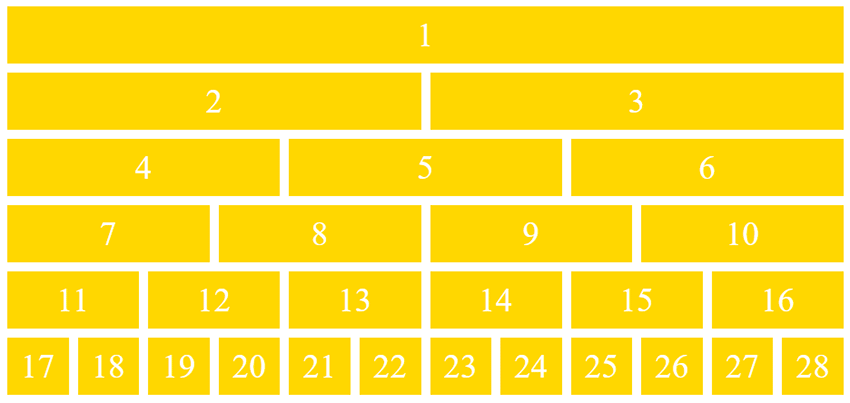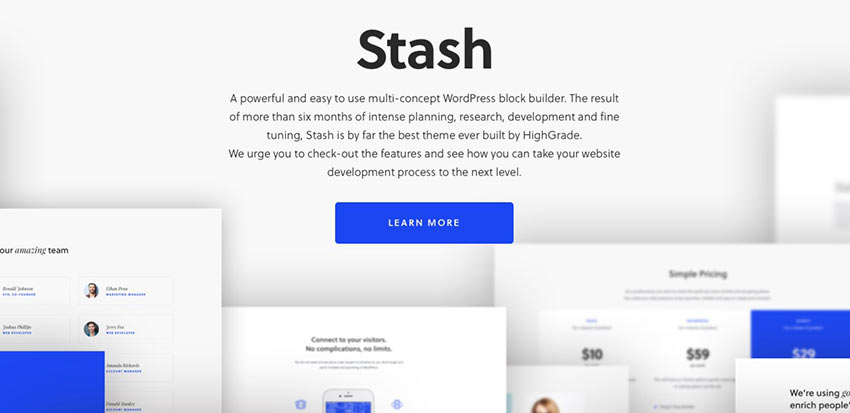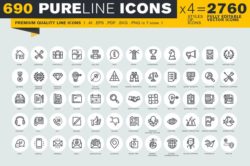Visit The Site For More...
Computer Nightmares: 7 Effective Tips for Hard Drive Recovery
Looking for ways to perform hard drive recovery?
Many things can go wrong while you’re using your device. A power surge can fry it and damage the motherboard, an outage can delete hours of progress if you didn’t save your work, and overuse will cause it to go haywire in the long run.
While these won’t cause any permanent damage or loss, a hard drive crash can prevent you from getting your data. What’s worse is that the simplest things like an OS update can cause your system to crash.
While there’s nothing you can do to prevent it when it happens, you can prepare yourself and your device for the inevitable. Read on to learn about the effective tips to recover your data from your hard drive today.
1. Ensure Your Device Doesn’t Have Malware
The first thing you should always check when you suffer from data loss is to check if your device has malware infecting it. You never know if your device contracted a virus while surfing the web. It’s easy to get one with how accessible everything is through the internet.
Malware can hide files from you or delete them from your hard drive. Scanning your hard drive for any virus can help you find out if you need to dive deeper into hard drive recovery. If you find malware that hides or deletes your data, you need not go further than removing it from your device.
The data it hides will then reappear where you left them. Any deleted data won’t recover themselves, though. You need to run recovery processes for them to undo any damage from the malware.
2. Install Recovery Tools Beforehand
This is the best way to prepare your device from losing data. Many online tools can help you restore your data if your device loses them because of an unforeseen event. Installing them on the regular ensures you store your growing collection of data in the long run.
The hard drive recovery software will save any current data you have on your device. This is customizable to allow them to only save specific folders and files. Doing this ensures private data doesn’t get saved on databases where other people can open them.
There are even versions of software compatible with mobile devices. These will allow you to restore your iPhone data even if you do a factory reset on it.
3. Perform Deep Searches on Your Device
Lost data doesn’t always mean deleted data. It can mean that the data moved to another folder where you can’t find them. It happens more often than you think since some malware moves your data around to mess with your device.
They do this so they can enough space in a certain drive to install more programs to cause more damage. When this happens, searching for the file in the same drive will produce no results. If you do a deep search, though, you can recover the lost data.
These searches differ from normal ones in that they take longer. This is because a deep search checks every corner of your device for the file you’re looking for. It can take up to an hour, but doing this saves you the trouble of recovering the data in other ways.
This is also a way to recover deleted photos on Mac. Most Apple devices have a backup of different media somewhere in your device. All you need to do is do a deep search to find them if you lost them.
4. Back-Up and Store Data in an External Device
The scary thing about a system failure is that it’s next to impossible to recover your data from them. It makes having important files and data on your device nerve-wracking since it can disappear with no warning. A great way to have peace of mind is to save any critical data on an external device.
A flash drive and external hard disk drive can be an expensive investment, but it can save you a world of stress when you save your data in them. All you need to do after that is to update the data. This is to ensure you have little to catch up on during recovery.
5. Store Data in the Cloud
Another way you can save your data is by saving them in the cloud. This is like saving your data to an external device, but you can access it any time you want. It also saves you the trouble of getting a device to save your data.
There are lots of storage platforms online for you to choose from. iCloud is the preferred platform if you have an Apple device. Other platforms like Google Drive also provide the same service.
You can store your data on these platforms for free, but the provided space is small. If you opt for a premium membership, though, you can increase your online storage space.
6. Run Backup CDs and DVDs
Backup DVDs are still a valid option for data recovery if you haven’t prepared for the other steps. The main benefit of using these for backup is that they can restore your data faster than most methods. It’s also a good way for you to ensure your device gets restored with the same specifications that you’ve set before saving it on the DVD.
7. Hire a Professional
If all hard drive data recovery methods you’ve tried have failed, then it’s time to contact a professional. Some people can recover data when things look the bleakest. They do this by having direct access to your hard drive.
This makes them a good option if your device is beyond repair. As long as the hard drive doesn’t sustain damage, they can recover your data. They’re often worth the investment if your data is too precious to lose.
Use These Tips for Hard Drive Recovery Today
Want to recover your lost data? These hard drive recovery tips will help you get what you’re looking for. Dive deep into your device and fish out your files and your data today!
Having trouble using your device? Check out more of our guides to learn all you need to know about your device today! You may even learn about some neat tricks you can do to personalize your experience with your device.
The post Computer Nightmares: 7 Effective Tips for Hard Drive Recovery appeared first on Photoshop Lady.
This Week In Web Design – August 14, 2020
Convert Reusable Blocks to Block Patterns with 1-Click
Now that WordPress 5.5 has shipped, block patterns are available in core for all users. If you have previously been relying on reusable blocks but prefer the flexibility of block patterns, you may want to convert these.
WordPress core developer Jean-Baptiste Audras has made this possible in the latest update of his Reusable Blocks Extended plugin. He posted a video demo of how the plugin converts reusable blocks to block patterns with one click.
What’s the difference between reusable blocks and block patterns?
Why might you want to convert your reusable blocks to block patterns? For users who are new to the concept, there are a few distinctions between these similar features.
Reusable blocks were designed to be a time-saving feature that allows users to save a block or group of blocks for use on other posts or pages. They can be edited but they have a certain distinction in that they are intended to look the same in all places they are used. Any changes made to a reusable block will apply to all instances of the block wherever it is used.
If a user wanted to make changes to a reusable block specific to one page, the process would involve clicking on the block’s properties and selecting “convert to regular block,” which would ensure that all edits would appear only on that specific instance of the block. It’s unlikely that most users would know how to do this without help, so this is one of the drawbacks of reusable blocks.
Block patterns are predefined block layouts that are designed to be changed. Once a pattern is inserted into the content, users can customize with their own text, images, alignments, colors, additional blocks, etc. The options are limitless and any changes made are not saved back to the original pattern. Block patterns provide a flexible starting point that gives users an idea of how blocks can be combined to make attractive layouts.
User-Created Patterns Are Coming Soon to the Block Pattern Builder Plugin
At the moment, users can create their own reusable blocks but not their own block patterns. Patterns have to be registered with code in order to appear in the pattern library. This is another reason that Audras’ one-click conversion is quite useful for users who are limited to capabilities offered in the editor’s current UI.
The ability to create block patterns inside the editor should be a feature in core. It would enable non-technical users to share their designs and creations in a more flexible format than reusable blocks provide. Until this feature is added to core – and it isn’t a guarantee- there is a plugin for that.
Justin Tadlock’s Block Pattern Builder plugin, which is available on WordPress.org, will soon be merging a pull request that adds the option to create block patterns inside the editor. It will work in a similar way to the process of adding reusable blocks. Now that block patterns are available in WordPress 5.5, this feature will be more useful to a wide range of users.
Audras’ Reusable Blocks Extended plugin, like many other amazing utilities for the editor, might be difficult to find unless you already know exactly what to search. Many times users are not even aware of the possibility of converting reusable blocks to patterns. This might also make a useful core feature but doesn’t seem likely to be a high priority at the moment. In the meantime, watch for more plugins to start extending block patterns to do interesting things now that they are available in core WordPress.
10 Years of Designmodo: Highs, Lows, Lessons and Inspiration
This post is originally published on Designmodo: 10 Years of Designmodo: Highs, Lows, Lessons and Inspiration

Designmodo turns 10 years old in August 2020! 🥳 All this time, I’ve never shared what happens behind the scenes here. It’s been an amazing journey – so I’ve decided to share how the company came to be what it …
For more information please contact Designmodo
Schema.org markup improving authoritativeness
Has anyone read about any studies, or has any anecdotal evidence, that might demonstrate that detailed schema.org/Person markup about an author improves the authoritativeness of an article or tutorial in Google's eyes?
WordPress.com vs WordPress.org Differences, Pros & Cons
 As a WordPress blog and a WordPress theme author we’ve seen our fair share of confusion about the differences between WordPress.com vs WordPress.org. This is completely understandable since both run on WordPress, both use themes and plugins and both are readily available for free online. But there are major differences between the two and those […]
As a WordPress blog and a WordPress theme author we’ve seen our fair share of confusion about the differences between WordPress.com vs WordPress.org. This is completely understandable since both run on WordPress, both use themes and plugins and both are readily available for free online. But there are major differences between the two and those […]
The post WordPress.com vs WordPress.org Differences, Pros & Cons appeared first on WPExplorer.
18 Grid Layouts for Building Stunning Websites
When building a new website, it’s always a good idea to sit down and think about all the content you truly want to feature. If you find that you have a lot to say, grid layouts are always a solid choice. For starters, most are responsive and will automatically adjust orientation based on the screen size each visitor is viewing it on.
But they’re also a good choice because they offer a convenient way to display a lot of information in a condensed space without being overwhelming. What follows is a list of free and premium grid layouts sourced from a variety of places including ThemeForest and CodePen, that offer flexibility and function for your website’s design.
12 Column Grid

Create up to a twelve-column grid with this grid layout template. It’s simple, straightforward but definitely gets the job done.
CSS Grid Layout – Template Areas
See the Pen
CSS Grid Layout – Template Areas by Mozilla Developers (@mozilladevelopers)
on CodePen.
Another option is this CSS Grid layout. It offers templated areas into which you can add custom content. It also offers multiple fill options.
Roph

Now here’s a WordPress theme that provides a grid layout you can use in a multitude of ways. It’s designed for portfolio websites and the sky’s the limit for how you can envision using it.
CSS Grid Layout
See the Pen
CSS Grid Layout – New Terminology by Stacy (@stacy)
on CodePen.
This CSS Grid layout is super simple, but would definitely make it a lot easier to create a custom website capable of conveying a lot of information at once. It also supports lovely hover effects.
Mono

This is an HTML5 template that offers a stylish grid layout you can use in a variety of ways. With multiple templates, color schemes, and settings to select from, you’re sure to find something that suits your needs here.
CSS Grid Layout with @support Flexbox Fallback
See the Pen
CSS Grid Layout with @support flexbox fallback by Gustaf Holm (@primalivet)
on CodePen.
Or you could use this CSS Grid layout with a Flexbox fallback that offers interesting effects and an engaging look.
Stash

Stash is a WordPress block builder theme that you can use to create a high-quality website for businesses, corporate sites, and e-commerce sites.
Juno

This is such a lovely layout! Juno is an ideal WordPress theme for portfolios and photography websites.
True Masonry with Grid Layout
See the Pen
True Masonry with Grid Layout by Balázs Sziklai (@balazs_sziklai)
on CodePen.
This is another super simple option that offers a masonry grid layout that you can customize in a variety of configurations.
CSS Grid Layout Demo
See the Pen
CSS Grid Layout Demo 5 – Grid Gap by Stacy (@stacy)
on CodePen.
Another great option is this CSS Grid layout. Change the width of each column, adjust the number of rows, and change their configuration.
CSS Grid Layout – Blog Post Template
See the Pen
CSS Grid Layout – Blog Post Template by Stacy (@stacy)
on CodePen.
This is another grid layout template that offers a blog post layout you can use for your HTML-based blog.
Flexbox Grid Layout w/Mobile Menu
See the Pen
Flexbox grid layout w/ Mobile Menu by Lindsey (@cssgirl)
on CodePen.
Or you can use this Flexbox grid layout for a blog post template. It includes a mobile menu, too.
Magazine Grid Layout Vol. II
See the Pen
Magazine Grid Layout Vol. II by ilithya (@ilithya)
on CodePen.
If you’re looking to create a publication, this magazine grid layout ought to do the trick.
Content Grid System
See the Pen
Content Grid System (CSS Grid Layout) by Tobias Gerlach (@Gerlach360)
on CodePen.
Here’s another great option. It’s a content grid system that you can use to display a lot of information at once.
Flex and Grid Demo
See the Pen
Flex and Grid demo by rachelandrew (@rachelandrew)
on CodePen.
The Flexbox and CSS Grid demo layout is ideal for showcasing info on cards across a portion of your website. Think descriptions of your services or pricing tables.
CSS Grid Layout + Mondrian
See the Pen
CSS Grid Layout + Mondrian = <3 by Toaster (@ToasterCo)
on CodePen.
This grid layout can be used for highlighting content or creating your own work of art. It’s up to you.
Masonry Grid Layout
See the Pen
Masonry Grid Layout by Marco Biedermann (@marcobiedermann)
on CodePen.
Create something monochromatic and impactful with this masonry grid layout. Use it for a portfolio, to display photography, or to create an experience.
Flex 12 Column Grid
See the Pen
Flex 12 Column Grid by Nick Else (@nickelse)
on CodePen.
The Flex 12 Column Grid layout is the last one on our list and another solid option. Display as much information as you need in an organized and eye-catching way, easily.
Build Your Best Website Yet with Grid Layouts
And there you have it! Another list completed. We hope it will serve you well. This collection of grid layouts feature selections that are all easy-to-use and nice to look at. Enjoy selecting one that will serve your content well.
Good luck!
Googlebot crawling AMP pages
Googlebot is crawling my AMP pages more than they are crawling my desktop pages. I have the appropriate canonical from AMP to desktop and amphtml from desktop to AMP. The desktop version also has a self-referencing canonical. Only canonical pages are in the sitemap.
This is a concern because less than 10% of our traffic is from mobile devices (unique, I know), yet it's more than 50% of our crawl budget.
The one thing that we do, which I'm not sure if this is appropriate or not, is whenever a desktop page 1 links to an internal page 2, the AMP version of page 1 links to the AMP version of page 2. Therefore, there are internal links pointing to AMP pages, but only from other AMP pages.
The other thing I was wondering is whether anyone has heard of Google serving AMP pages to desktop users behind low bandwidth connections, where they could benefit from AMP. Supposedly AMP doesn't have to be for only mobile anymore, but Google hasn't really demonstrated this. We don't get a lot of mobile traffic, but we do get a lot of third-world / low-bandwidth traffic.
Unsplash Open Sources its Image Library
Unsplash, an online image provider, has released an open image dataset. The new library currently contains over 2 million high-quality images, with 16GB of accompanying data. The accompanying data includes keyword-image conversions (in search results), community and AI-generated keywords, EXIF, location and landmarks, image categories/subcategories, user-generated collection, image views, and download statistics.
System UIcons
This is a great collection of icons by Corey Ginnivan that’s both free and with no attribution required when you use them. The style is super simple. Each icon looks like older versions of the icons from macOS to me because they’re cute but not too cute.
Also? The icon picker UI is slick and looks something like this today:

Oh and also, as I was looking around Corey’s personal site I noticed this lovely UI effect when you scroll —each card stacks on top of each other:
Direct Link to Article — Permalink
The post System UIcons appeared first on CSS-Tricks.
You can support CSS-Tricks by being an MVP Supporter.
How to remove content from Google?
I am trying to remove an entire folder of thin content from Google to help me recover from a Panda/EAT-related penalty. I want to keep the content on the site for the benefit of users, but not waste crawl budget or have Google think that we have so many pages of thin content.
I added the folder to robots.txt quite a few months ago. While some pages are showing up as "Blocked by robots.txt", the majority of pages now show up in my coverage report as "Indexed, though blocked by robots.txt". About 2 months ago, I submitted a removal request for all URLs that begin with the prefix, but there's been no change. Google Search Console's report updates every few days, but the number of URLs that say, "Indexed, though blocked by robots.txt" is increasing, even months after the removal request for those same pages.
Top 5 Photography Destinations For Summer
zerodivs.com
Pretty neat little website from Joan Perals, inspired by stuff like Lynn’s A Single Div. With multiple hard-stop background-image gradients, you don’t need extra HTML elements to draw shapes — you can draw as many shapes as you want on a single element. There is even a stacking order to work with. Drawing with backgrounds is certainly CSS trickery!
The site stores your drawing IDs in localStorage so you’ve got basic CRUD functionality right there. I bet the whole thing is a little hop away from being an offline PWA.
Direct Link to Article — Permalink
The post zerodivs.com appeared first on CSS-Tricks.
You can support CSS-Tricks by being an MVP Supporter.
7 Tips on Choosing WordPress Themes for Your Website
In 2020, a whopping 35% of the Internet is powered by WordPress, which means over 455,000,000 websites are using WordPress as their platform. The reason why WordPress is so popular is because of its ease of installation, ability to customize everything, its safety features, and ease of use for beginners. One of the most distinctive features […]
The post 7 Tips on Choosing WordPress Themes for Your Website appeared first on WPArena.
Proxies & SEO – Efficient Monitoring
According to BreexyHill Marketing, 81% of people conduct some sort of online search before they make a large purchase. This means brands must be visible if they are to attract such buyers. Businesses have, therefore, learned the importance of SEO to improve the search engine ranking of their websites. But is that enough in such […]
The post Proxies & SEO – Efficient Monitoring appeared first on WPArena.
What does 100% mean in CSS?
When using percentage values in CSS like this…
.element {
margin-top: 40%;
}…what does that % value mean here? What is it a percentage of? There’ve been so many times when I’ll be using percentages and something weird happens. I typically shrug, change the value to something else and move on with my day.
But Amelia Wattenberger says no! in this remarkable deep dive into how percentages work in CSS and all the peculiar things we need to know about them. And as is par for the course at this point, any post by Amelia has a ton of wonderful demos that perfectly describe how the CSS in any given example works. And this post is no different.
Direct Link to Article — Permalink
The post What does 100% mean in CSS? appeared first on CSS-Tricks.
You can support CSS-Tricks by being an MVP Supporter.











